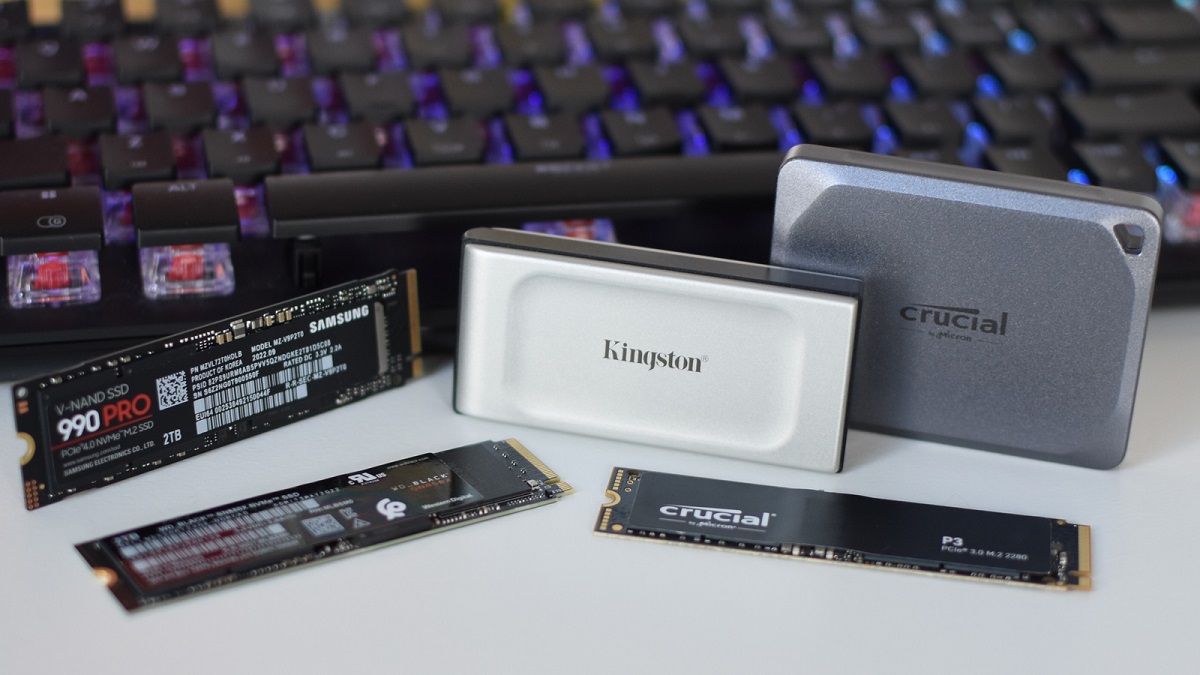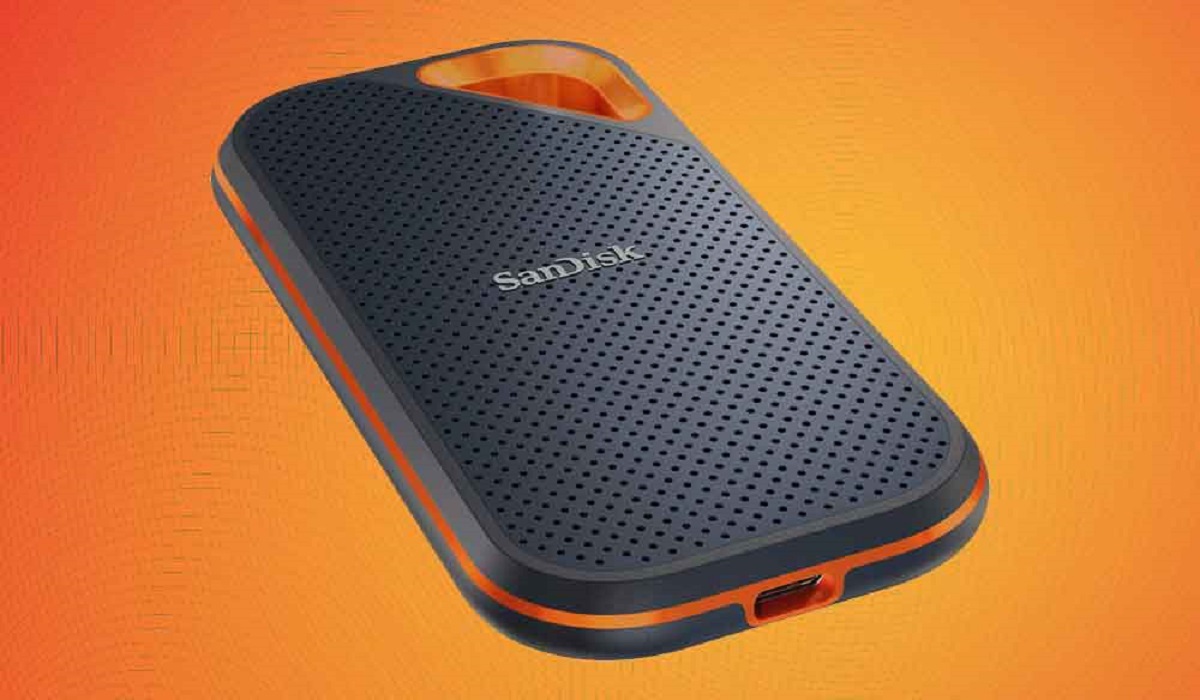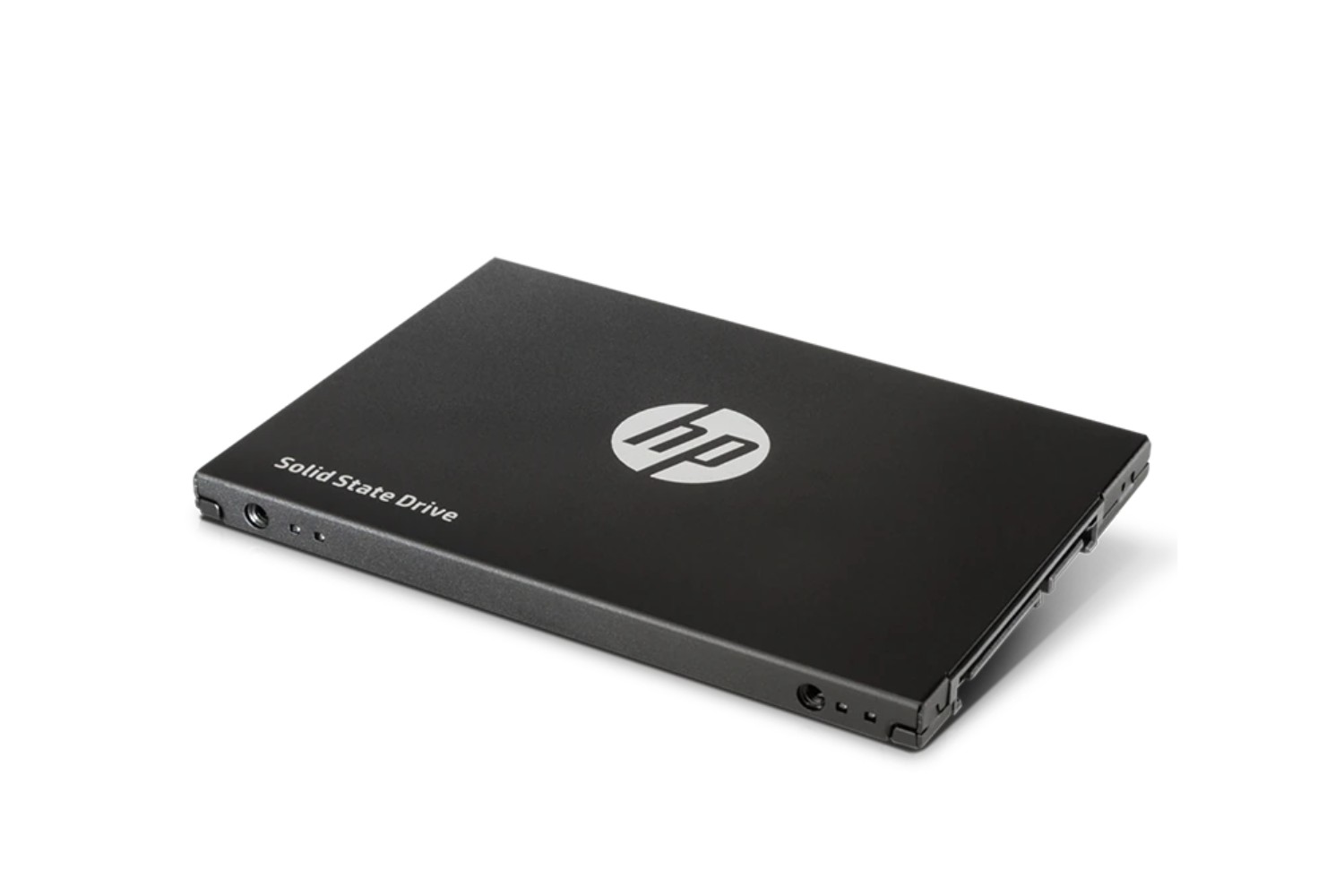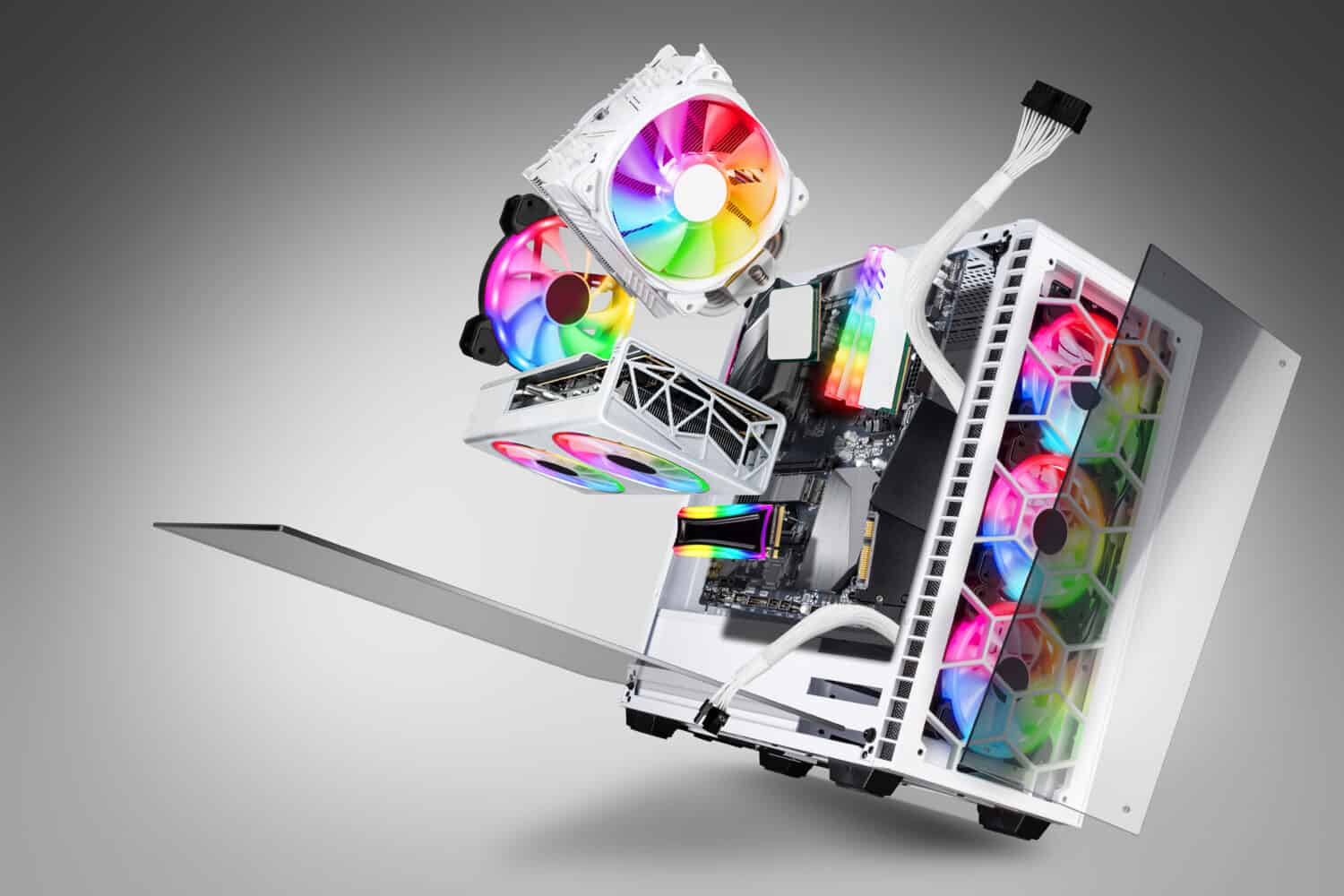Introduction
In today’s digital age, where data storage plays a crucial role in our daily lives, having a reliable and efficient storage solution is of utmost importance. One such solution that has revolutionized the storage industry is the Solid-State Drive (SSD). As computers and devices become faster and more powerful, SSDs have become increasingly popular due to their superior performance compared to traditional hard disk drives (HDDs).
SSDs use flash memory technology to store and retrieve data, unlike HDDs which rely on mechanical spinning disks. This key difference allows SSDs to deliver lightning-fast read and write speeds, resulting in significantly improved overall system performance. As a result, SSDs are the storage medium of choice for many individuals and businesses looking to enhance their productivity and efficiency.
However, with a wide variety of SSD options available on the market, it can be challenging to determine the right size and form factor for your specific needs. In this article, we will explore different sizes of SSDs, including 2.5-inch SSDs, M.2 SSDs, PCIe SSDs, and NVMe SSDs, to help you make an informed decision when choosing the right size SSD for your requirements.
Whether you are a casual user looking to upgrade your laptop’s storage capacity or a professional in need of a high-performance storage solution, understanding the various sizes and form factors of SSDs will empower you to make the right choice that perfectly fits your needs. Without further ado, let’s dive into the world of SSDs and explore the different sizes available to consumers today.
What is a SSD?
A Solid-State Drive (SSD) is a type of non-volatile storage device that is designed to store and retrieve data electronically. Unlike traditional hard disk drives (HDDs) that use spinning disks and magnetic heads to read and write data, SSDs utilize flash memory technology. This eliminates the need for any moving parts, resulting in faster data access times and increased durability.
The main component of an SSD is a memory controller, which manages the storage and retrieval of data stored in the flash memory chips. These memory chips are organized into blocks, pages, and cells, with each cell capable of storing multiple bits of data. The data stored on an SSD stays even when there is no power supplied, making it non-volatile.
One of the main advantages of SSDs is their incredible speed. Unlike HDDs, which have to physically seek and spin the disk to locate data, SSDs can access any data instantly. This results in significantly faster boot times, application launches, and overall system responsiveness.
Another benefit of SSDs is their reliability and durability. Since there are no moving parts, SSDs are less prone to mechanical failures, such as head crashes or motor failures, which can occur in HDDs. Moreover, they are better equipped to withstand shock, vibration, and extreme temperatures, making them ideal for portable devices or environments with demanding conditions.
SSDs also consume less power compared to HDDs, making them more energy-efficient. This can lead to longer battery life in laptops and lower electricity bills for desktop systems. Additionally, the absence of noise generated by spinning disks and moving parts contributes to a quieter computing experience.
Over the years, the prices of SSDs have significantly decreased, making them more affordable and accessible to consumers. As the demand for faster and more efficient storage solutions continues to grow, the popularity of SSDs is expected to increase even further.
In the next sections, we will explore the different sizes and form factors of SSDs, helping you understand the options available and choose the right size SSD for your specific needs.
Different Sizes of SSDs
When it comes to SSDs, there are several different sizes and form factors available. Each size caters to specific needs and is designed to fit different types of devices. Understanding the various sizes will help you select the right SSD that is compatible with your device and provides the storage capacity you require.
Here are the most common sizes of SSDs:
- 2.5-inch SSDs: These SSDs are the most widely used and are designed to fit in the same form factor as traditional laptop hard drives. They typically have a thickness of 7mm or 9.5mm, making them compatible with most laptops, desktops, and external enclosures. 2.5-inch SSDs usually come in capacities ranging from 120GB to 4TB, making them suitable for a wide range of storage needs.
- M.2 SSDs: M.2 SSDs are smaller and more compact than 2.5-inch SSDs, making them ideal for thin and light laptops and desktops. They connect directly to the motherboard using the M.2 slot, eliminating the need for cables. M.2 SSDs come in different lengths, indicated by numerical measurements such as 2242, 2280, and 22110, where the first two digits represent the width and the following two digits represent the length in millimeters. These SSDs are available in various capacities, starting from 128GB and going up to 2TB or more.
- PCIe SSDs: PCIe SSDs harness the power of the PCIe (Peripheral Component Interconnect Express) interface to deliver even faster data transfer speeds. These SSDs are commonly used in high-performance applications such as gaming, video editing, and professional workstations. They come in different physical sizes, including both add-in card form factors that plug into the PCIe slot and U.2 form factors that resemble traditional hard drives.
- NVMe SSDs: NVMe (Non-Volatile Memory Express) is a protocol that allows SSDs to communicate with the computer’s CPU more efficiently, unlocking even greater performance. NVMe SSDs are available in various form factors, including U.2, M.2, and PCIe add-in cards. These SSDs can deliver incredibly fast read and write speeds, making them ideal for demanding applications where speed is crucial.
Choosing the right size SSD depends on your specific requirements and the device you plan to install it in. If you are upgrading a laptop or desktop, make sure to check the compatibility of the form factor and dimensions. Additionally, consider the storage capacity you need for your files, applications, and operating system to ensure you have enough space.
Now that we have explored the different sizes of SSDs, we can move on to understanding the features and advantages of each form factor to help you make an informed decision about which SSD size would be best suited for your needs.
5-inch SSDs
2.5-inch SSDs are one of the most commonly used types of solid-state drives. As the name suggests, they are designed to fit into the same form factor as traditional 2.5-inch laptop hard drives, making them compatible with a wide range of devices.
One of the main advantages of 2.5-inch SSDs is their versatility. They can be easily installed in laptops, desktop computers, and external enclosures, making them a popular choice for both personal and professional use. Additionally, their standard size allows for easy compatibility with existing drive bays and connectors.
These SSDs typically come in 7mm or 9.5mm thickness variations. The slimmer 7mm models are often used in ultra-thin laptops and compact desktop systems, while the 9.5mm models are commonly found in standard laptops and desktops. It’s important to ensure compatibility with your specific device before purchasing a 2.5-inch SSD.
When it comes to capacity, 2.5-inch SSDs offer a wide range of options. They are available in capacities starting from 120GB and can go up to a massive 4TB or more, catering to various storage needs. Whether you need a smaller capacity for everyday use or a larger capacity for storing extensive media libraries or professional files, there is a 2.5-inch SSD available to suit your requirements.
2.5-inch SSDs utilize SATA (Serial ATA) interface to connect to the computer’s motherboard. SATA III is the most common version, providing a theoretical maximum data transfer speed of 6 gigabits per second (Gbps). While SATA III offers a significant boost compared to previous generations, it is important to note that the actual transfer speeds may be lower due to various factors such as the SSD controller, NAND flash memory type, and other system limitations.
In terms of performance, 2.5-inch SSDs offer significantly faster read and write speeds compared to traditional hard drives. This results in faster boot times, reduced application loading times, and improved overall system responsiveness. Additionally, the absence of moving parts in 2.5-inch SSDs makes them more resilient to physical shock and vibration, ensuring enhanced reliability and durability compared to HDDs.
When considering a 2.5-inch SSD, it’s advisable to evaluate factors such as the brand reputation, warranty, and customer reviews to ensure you are purchasing a reliable and high-quality product. Additionally, look for features like data encryption, error correction technologies, and power efficiency, depending on your specific needs and preferences.
Overall, 2.5-inch SSDs provide a convenient and efficient storage upgrade solution for a wide range of devices. Whether you want to breathe new life into an aging laptop or improve the performance of your desktop, a 2.5-inch SSD can offer a significant boost in speed, storage capacity, and overall productivity.
M.2 SSDs
M.2 SSDs have gained popularity in recent years due to their compact size and high performance. They are designed to fit into the M.2 slot on the motherboard, eliminating the need for cables and allowing for a more streamlined installation process.
One of the main advantages of M.2 SSDs is their small form factor. They come in various lengths, denoted by numerical measurements such as 2242, 2280, and 22110, where the first two digits represent the width and the following two digits represent the length in millimeters. This flexibility in sizing allows M.2 SSDs to be used in a wide range of devices, from ultra-thin laptops to small form factor desktops.
M.2 SSDs utilize the SATA III or PCIe interface to connect to the motherboard. SATA III M.2 SSDs provide similar performance to traditional 2.5-inch SATA SSDs, with a theoretical maximum data transfer speed of 6 gigabits per second (Gbps). PCIe M.2 SSDs, on the other hand, can offer significantly faster speeds, especially with the newer PCIe Gen 3.0 and Gen 4.0 interfaces, which provide higher bandwidth and lower latency.
When it comes to performance, M.2 SSDs are known for their speed. Thanks to their direct connection to the motherboard, M.2 SSDs can deliver faster data transfer rates, resulting in quicker boot times, faster application launches, and improved overall system responsiveness. PCIe M.2 SSDs, especially those utilizing the NVMe (Non-Volatile Memory Express) protocol, can offer even higher performance levels, making them ideal for demanding tasks such as gaming, content creation, and professional workloads.
M.2 SSDs are available in a wide range of capacities, starting from smaller sizes like 128GB and going up to larger sizes like 2TB or more. This allows users to choose the capacity that best suits their storage needs, whether it’s for everyday computing or heavy-duty applications that require extensive storage space.
Another advantage of M.2 SSDs is their compact and sleek design. The absence of cables and the ability to be mounted directly onto the motherboard make M.2 SSDs a great choice for devices with limited internal space. They also have low power consumption, contributing to energy efficiency and longer battery life in portable devices.
It is important to note that when purchasing an M.2 SSD, compatibility with the motherboard and the specific M.2 slot is crucial. M.2 slots can support different key types, such as B-key, M-key, or both, which determine the type of SSD that can be installed. Therefore, it’s essential to check the motherboard specifications and consult the manufacturer’s documentation before purchasing an M.2 SSD.
Overall, M.2 SSDs offer a combination of compact size, high-performance capabilities, and versatile storage options. Whether you are building a compact gaming rig or upgrading your laptop for faster speed and responsiveness, M.2 SSDs provide an excellent solution for maximizing storage performance in a small form factor.
PCIe SSDs
PCIe (Peripheral Component Interconnect Express) SSDs are a type of solid-state drive that utilizes the PCIe interface to deliver exceptional performance. These SSDs are commonly used in high-performance applications such as gaming, video editing, and professional workstations.
One of the main advantages of PCIe SSDs is their blazing-fast data transfer speeds. Unlike traditional SATA or M.2 SSDs that are limited by the SATA III or PCIe Gen 3.0 interface, PCIe SSDs can take advantage of the higher bandwidth offered by newer PCIe Gen 4.0 or even Gen 5.0 interfaces. This allows for significantly faster read and write speeds, reducing file transfer times and improving overall system responsiveness.
PCIe SSDs come in different physical form factors. The most common form factor is the add-in card, which plugs directly into the PCIe slot on the motherboard. These cards can vary in size and length, so it’s important to ensure compatibility with your motherboard and available PCIe slots.
In addition to add-in cards, there are also U.2 form factor PCIe SSDs, which resemble traditional hard drives in terms of physical size and shape. These SSDs are designed to be hot-swappable and provide high-speed connectivity through the U.2 interface.
When it comes to capacity, PCIe SSDs offer a wide range of options, ranging from smaller capacities like 256GB to larger capacities exceeding multiple terabytes. This flexibility allows users to choose the storage capacity that best suits their needs, whether it’s for storing large multimedia files or working with massive datasets.
PCIe SSDs, especially those utilizing the NVMe (Non-Volatile Memory Express) protocol, offer multiple performance benefits. NVMe is a high-performance, optimized protocol specifically designed for solid-state devices, allowing for efficient communication between the SSD and the computer’s CPU. This results in reduced latency, improved queue handling, and higher IOPS (Input/Output Operations Per Second), ultimately leading to faster data access and superior overall performance.
In terms of installation, PCIe SSDs are relatively easy to install. If you opt for an add-in card, you simply need to ensure that you have an available PCIe slot on your motherboard. Some motherboards may require adjusting BIOS settings to enable the PCIe SSD as the boot drive. On the other hand, U.2 form factor PCIe SSDs can be connected directly to the U.2 port on compatible motherboards or used with adapter cables if required.
It’s important to note that due to the higher performance and advanced features of PCIe SSDs, they are generally priced higher than SATA or M.2 SSDs. However, for users who require top-of-the-line performance and can benefit from the increased speeds, the investment is often well worth it.
Overall, PCIe SSDs provide an excellent solution for users who demand the highest levels of performance and speed. Whether you are a professional working with resource-intensive applications or a gamer seeking lightning-fast load times, PCIe SSDs offer the performance and storage capacity needed to take your computing experience to the next level.
NVMe SSDs
NVMe (Non-Volatile Memory Express) SSDs are a type of solid-state drive that takes advantage of the NVMe protocol to deliver unparalleled performance. These SSDs are known for their exceptional speed, making them ideal for demanding applications where fast data access is crucial.
One of the key advantages of NVMe SSDs is their ability to leverage the PCIe (Peripheral Component Interconnect Express) interface, specifically designed for high-performance storage devices. Compared to traditional SATA or even PCIe-based SSDs, NVMe SSDs offer significantly faster read and write speeds, resulting in lightning-fast data transfer rates and reduced latency.
NVMe SSDs are available in various form factors, including M.2, U.2, and PCIe add-in cards. M.2 NVMe SSDs have gained popularity due to their compact size and compatibility with a wide range of devices such as laptops, desktops, and mini PCs. U.2 NVMe SSDs, on the other hand, resemble traditional hard drives and provide hot-swappable capabilities. PCIe add-in card NVMe SSDs offer maximum performance and are commonly used in high-end gaming PCs and workstations.
Performance is where NVMe SSDs truly shine. With the NVMe protocol’s advanced features and optimized performance characteristics, these SSDs can deliver significantly higher IOPS (Input/Output Operations Per Second), allowing for faster data access and reduced latency. This translates into lightning-fast boot times, almost instantaneous application launches, and seamless multitasking.
Additionally, NVMe SSDs provide exceptional scalability and storage capacity options. They are available in a wide range of capacities, from smaller sizes like 256GB to larger sizes exceeding multiple terabytes. This makes NVMe SSDs suitable for a variety of use cases, whether it’s for everyday computing, professional workloads, or gaming with large game libraries.
Another advantage of NVMe SSDs is their advanced features and technologies. These may include power loss protection mechanisms, error correction algorithms, and hardware-based AES encryption for enhanced data security. Additionally, some NVMe SSDs may offer features like low power consumption and SMART (Self-Monitoring, Analysis, and Reporting Technology) monitoring for detecting potential drive failures and maintaining drive health.
It’s important to note that to maximize the performance of NVMe SSDs, both the SSD and the motherboard must support the NVMe protocol. While most modern motherboards have NVMe support, it’s advisable to check the specifications and consult the manufacturer’s documentation before making a purchase.
In terms of installation, NVMe SSDs are relatively straightforward. M.2 NVMe SSDs simply need to be inserted into the compatible M.2 slot on the motherboard, while U.2 and PCIe add-in card NVMe SSDs require connecting to the appropriate port or slot. It’s essential to follow the manufacturer’s instructions and guidelines for proper installation.
Overall, NVMe SSDs provide unrivaled performance and speed, making them an excellent choice for users who demand the utmost in storage performance. Whether you are a professional working with large datasets, a content creator dealing with high-resolution media, or a gamer seeking the fastest load times, NVMe SSDs deliver the performance and reliability needed to meet the demands of intensive computing tasks.
Choosing the Right Size SSD for Your Needs
When it comes to selecting the right size solid-state drive (SSD) for your specific needs, several factors come into play. Understanding your storage requirements and considering the compatibility with your device are crucial in making an informed decision.
The first step in choosing the right size SSD is determining the amount of storage capacity you need. Consider the types of files you will be storing on the drive—documents, photos, videos, games, or professional applications. Take into account their file sizes and how much space they will occupy. It’s always a good idea to leave some room for future growth and unexpected needs.
Keep in mind that SSDs generally come in a range of capacities, from smaller sizes like 120GB or 256GB to larger sizes exceeding multiple terabytes. For most average users, a capacity of 500GB to 1TB is often sufficient. However, power users and professionals may opt for larger capacities to accommodate their extensive files or data-intensive workloads.
In addition to capacity, the form factor and compatibility of the SSD with your device are critical considerations. Different devices have specific requirements for the physical dimensions and connection interfaces of the SSD. For example, if you are upgrading a laptop, you may need a 2.5-inch SSD or an M.2 SSD depending on the available slots. Desktops, on the other hand, may have more flexibility in terms of form factors, allowing you to choose from a wider range of options.
It’s essential to check the specifications of your device and consult the manufacturer’s documentation to ensure compatibility with the desired SSD form factor. This will ensure that the SSD fits physically and can be properly connected to the device’s motherboard.
Furthermore, consider the performance requirements of your specific use case. If you are a gamer or work with resource-intensive applications, you may benefit from a high-performance PCIe NVMe SSD that offers faster read and write speeds. On the other hand, if you have more general needs, a SATA SSD or a mainstream M.2 SSD may provide a good balance of performance and affordability.
Budget is another factor to consider when choosing the right size SSD. Typically, SSDs with larger capacities tend to be more expensive. Therefore, it’s important to strike a balance between the amount of storage you need and your budget constraints. Assess your needs, evaluate the cost per gigabyte, and make a decision that aligns with your budgetary limitations.
Finally, it’s advisable to consider the reputation of the manufacturer and the specific SSD model. Look for reviews and feedback from other users to gauge the reliability, performance, and customer support of the SSD. Choosing a reputable brand with a good track record can provide peace of mind and ensure a high-quality product.
By considering your storage requirements, compatibility, performance needs, budget, and brand reputation, you will be able to make an informed decision and select the right size SSD that perfectly aligns with your needs and preferences.
Conclusion
Solid-State Drives (SSDs) have revolutionized the storage industry with their superior performance, speed, and reliability compared to traditional hard disk drives. Understanding the different sizes and form factors of SSDs is essential in choosing the right one for your specific needs.
In this article, we explored the various sizes of SSDs, including 2.5-inch SSDs, M.2 SSDs, PCIe SSDs, and NVMe SSDs. Each size offers its own advantages and is designed to fit different types of devices. The 2.5-inch SSDs are widely used and versatile, fitting well in laptops, desktops, and external enclosures. M.2 SSDs, on the other hand, provide a compact solution for thin and light laptops and desktops. PCIe SSDs harness the power of the PCIe interface and are ideal for high-performance applications. NVMe SSDs, utilizing the NVMe protocol, deliver exceptional speed and performance.
To choose the right size SSD for your needs, consider factors such as your storage capacity requirements, device compatibility, performance needs, and budget. It’s important to strike a balance between these factors to ensure you have sufficient storage space, proper compatibility with your device, and the performance you desire, all within your budgetary constraints.
Additionally, it’s important to consider the reputation of the SSD manufacturer and the specific SSD model. As SSDs play a critical role in data storage, choosing a reputable brand ensures reliability, quality, and customer support.
Whether you are upgrading a laptop, building a desktop system, or seeking to enhance the performance of your device, understanding the different sizes of SSDs empowers you to make an informed decision. By selecting the right size SSD, you can enjoy faster boot times, improved application launches, and increased productivity.
Now that you have a better understanding of the various sizes of SSDs, you can confidently choose the one that best fits your needs. Upgrade your storage solution today and experience the power and speed of SSD technology.

























